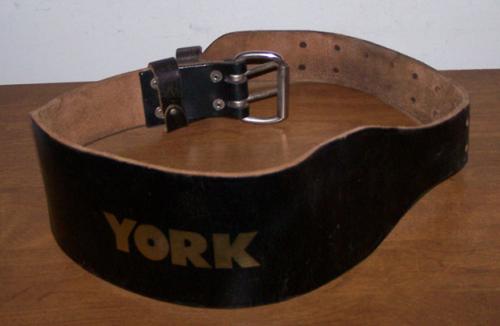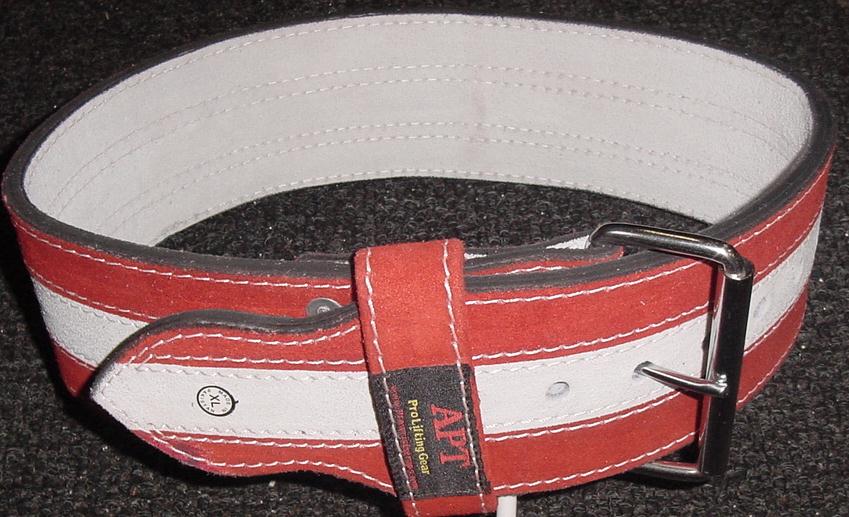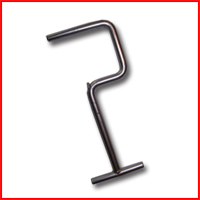Should you wear a weight belt?

You’ve seen them in the weight room at your local globogym – big hulking dudes that look like bodybuilders with big belts in the back and small straps in the front. It might look something like this:

The guys wearing these sweet belts are doing tricep pressdowns on the cable machine using the rope attachment, they’re doing curls with the 60 lb. EZ-curl bars, and they’re bouncing their bench press reps off their chest.
Let’s get one thing straight: These belts suck and so do the lifters who use them.
The reason that you use a belt is to give the abs something to push against – therefore making them work harder in the squat, deadlift, press, and bench press. The belt pictured above is small in the front, giving your abs basically nothing to push against! These belts are designed to “support the back,” which completely misses the mark on why you would use a belt in the first place. Gary Gibson on the Starting Strength message board put it very well:
The belt allows one to squat more weight NOT because it provides rebound…and not because the belt itself increases the necessary intra-abdominal pressure. The belt gives the abs something to push against so that the ABS THEMSELVES can provide more pressure. The belt just allows the abs to generate more tension by providing external resistance…just like a freaking weighted barbell on your back allows you to generate more tension than just flexing your lower body muscles really hard without the barbell as you stand up.
A journal article was printed regarding belts and their effect in both the conventional and the sumo stance deadlift. The results were:
Results: … Compared with the no-belt condition, the belt condition produced significantly greater rectus abdominis activity and significantly less external oblique activity.
Yep, as Gary said, the belt helps the abs work harder and it decreases the strain on the obliques – both good things!
Now, a proper belt will be 3-4 inches tall and 10mm thick all the way around – no taper. Most lifters should use a 4″ belt unless they have a short torso and less than normal room between the top of their ribcage and the iliac crest, in which case a 3″ belt is probably best. 13mm thick belts are for super strongmen and powerlifters and take forever to break in and use, so they’re probably not something that is applicable for the average athlete.
I personally own the following APT belt:

It’s a single-prong model, which is a lot easier to get on and off, and it was reasonably priced at $50 plus S&H from their website. I even had to return my first one because I mismeasured my belt size (it goes around your belly button, not your waist) and the exchange process was simple and easy.
You might want to get a belt tightener tool so you can wear the belt extremely tightly around the midsection. They look something like this:

However, these seemingly-simple tools cost about $40-50 from various stores online! It’s pretty expensive for a piece of metal. I will say that they are extremely useful, though – it’s very difficult to get the desired tightness around the midsection by yourself, and unless you have really strong friends, once you use this tool, you won’t go back (I feel this way myself).
So if your squat is stalling and you’re at the end of your novice program, it might be time to invest in a nice belt. I use an APT belt, but there are a lot of good companies – many of my friends use Inzer with great success. Just be sure to get a single-pronged (or lever) belt that’s 10mm thick and 4″ tall unless you have a short torso.
Comment section